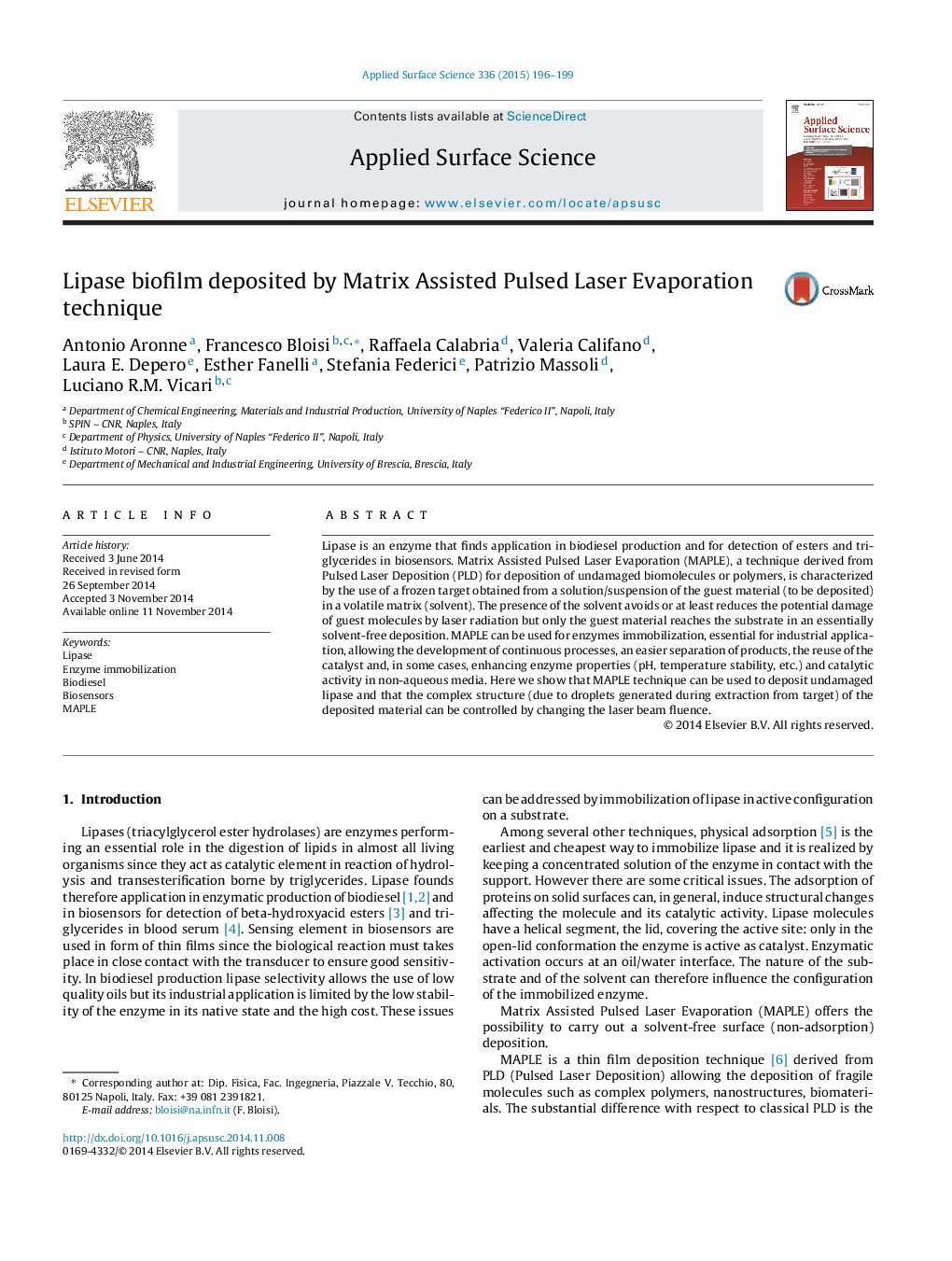| Article ID | Journal | Published Year | Pages | File Type |
|---|---|---|---|---|
| 5358559 | Applied Surface Science | 2015 | 4 Pages |
Abstract
Lipase is an enzyme that finds application in biodiesel production and for detection of esters and triglycerides in biosensors. Matrix Assisted Pulsed Laser Evaporation (MAPLE), a technique derived from Pulsed Laser Deposition (PLD) for deposition of undamaged biomolecules or polymers, is characterized by the use of a frozen target obtained from a solution/suspension of the guest material (to be deposited) in a volatile matrix (solvent). The presence of the solvent avoids or at least reduces the potential damage of guest molecules by laser radiation but only the guest material reaches the substrate in an essentially solvent-free deposition. MAPLE can be used for enzymes immobilization, essential for industrial application, allowing the development of continuous processes, an easier separation of products, the reuse of the catalyst and, in some cases, enhancing enzyme properties (pH, temperature stability, etc.) and catalytic activity in non-aqueous media. Here we show that MAPLE technique can be used to deposit undamaged lipase and that the complex structure (due to droplets generated during extraction from target) of the deposited material can be controlled by changing the laser beam fluence.
Related Topics
Physical Sciences and Engineering
Chemistry
Physical and Theoretical Chemistry
Authors
Antonio Aronne, Francesco Bloisi, Raffaela Calabria, Valeria Califano, Laura E. Depero, Esther Fanelli, Stefania Federici, Patrizio Massoli, Luciano R.M. Vicari,
